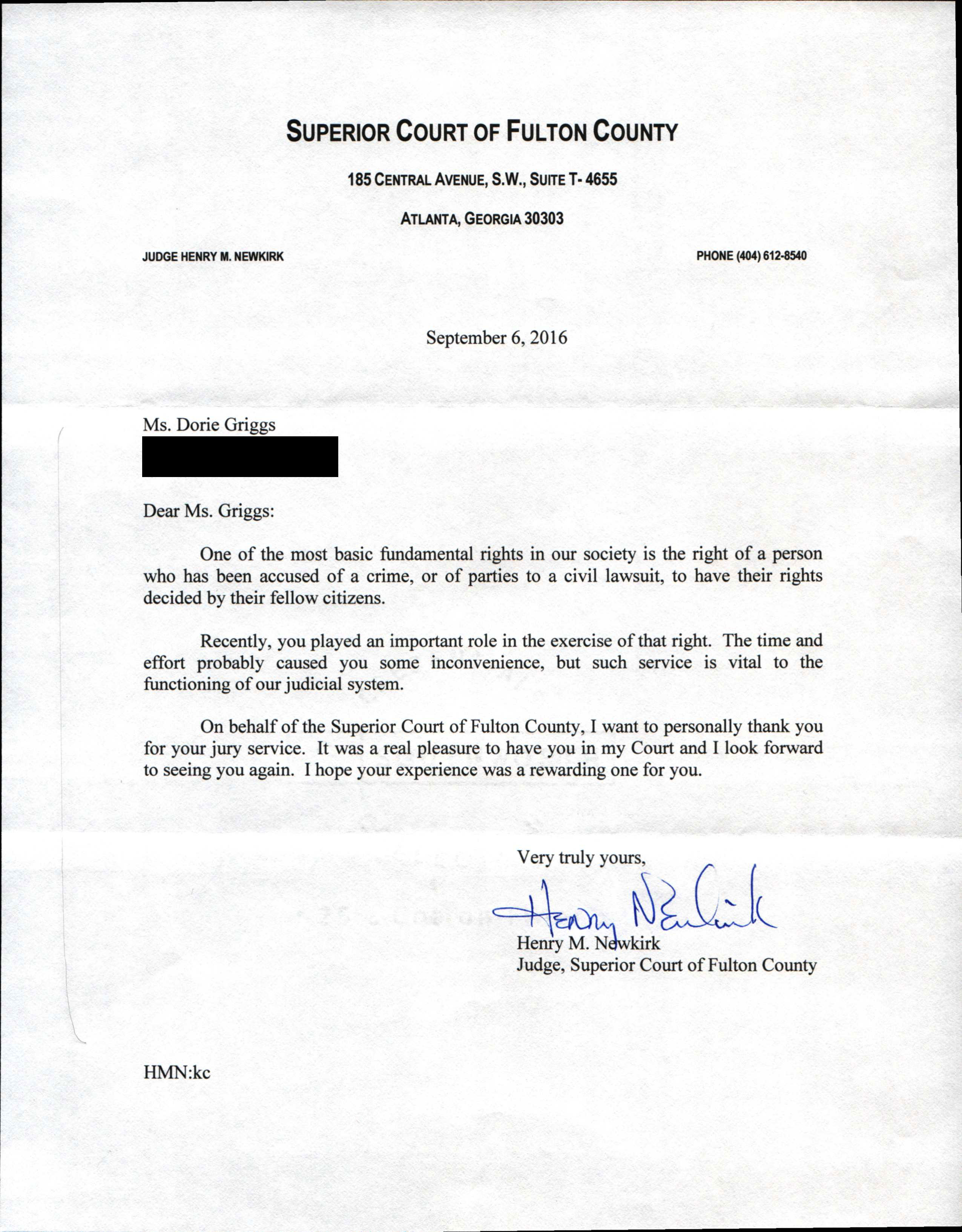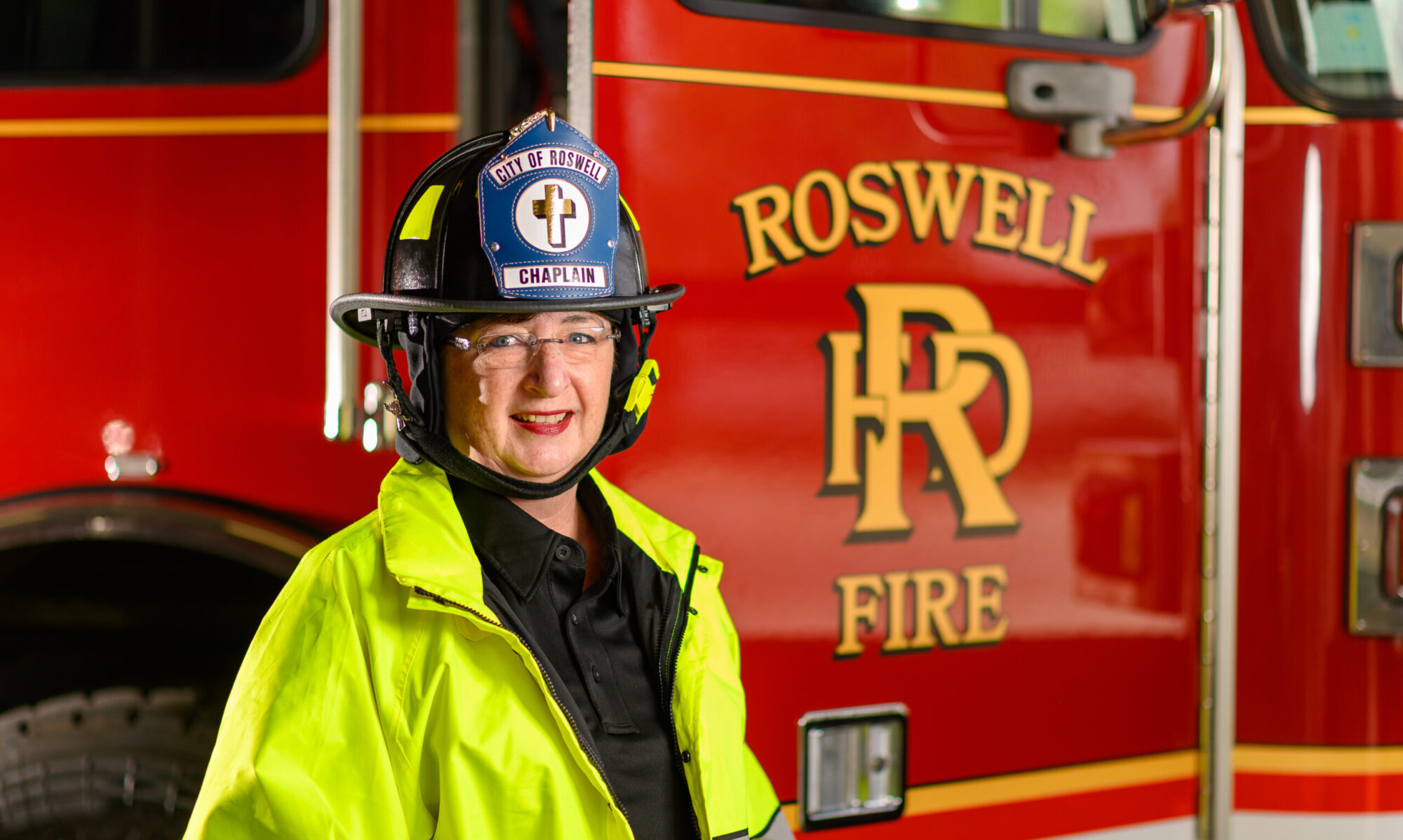
The past week I’ve had the opportunity to reflect on these two words, Justice and Grace. I served on a jury for a murder trial. This blog site is mainly for my posts to parents of cadets at The Citadel, but today I must reflect on the events of the past week, in large part to help me move forward.
If you follow this blog for Citadel related information, you will want to skip reading this entry.
Jury Selection
On August 29 I reported for jury duty. I’m one of those strange people that don’t mind being called and I was looking forward to the day. In the past ten years I’ve reported for jury duty several times but have never served on a jury. So, with a book in hand I reported to the Fulton County Courthouse in downtown Atlanta to spend what I thought would be a day of sitting in the jury holding room.
The morning started out well. I met a lady in the security line form my town who also has a student at the same high school as my daughter. We took our seats near a podium by a window over looking the state capitol, quite an improvement over the old jury room.
My first clue that this would not be an ordinary day came when the Judge entered the room to welcome the potential jurors. I looked up and a few feet to my right stood Judge Jane Barwick. I first met Jane when she served on the board of directors of Simpsonwood a retreat center for the North Georgia Conference of the United Methodist Church. I was the director of marketing and development and Jane was on my committee of the board. After my daughter was born I ran into Jane again. This time she was a recently enrolled student at Columbia Theological Seminary. So seeing my long time friend that morning seemed like a fun way to start the day.
Shortly after the welcome by Jane they called the first group of names to report to a courtroom. Since I was in a stand by group I really didn’t think I would be called. Surprise! I was juror #52 out of 60 called in that first group.
Once we filed into the courtroom we were instructed to hold the laminated number that corresponded with the one we were given when our names were called. The judge introduced us to the prosecution and the defense lawyers and explained how the selection process would begin. We were told it is a murder trial and mentioned it was in the news a couple of years prior. The attorneys began with their questions. Since the deceased was a three year old who died in daycare many of the questions had to do with caring for children. As the mom of three who has worked both as a volunteer and an employee of a church I had quite a few opportunities to work with children so my number was raised quite a bit. At this point I hoped that would mean I wouldn’t be called. I just wasn’t sure how I would react being on a jury that dealt with the death of a small child.
There was a lot of waiting around on Monday. Once the questions were asked in the large group of 60, the judge began calling us in in groups of 6 to be questioned one at a time. To help speed up the process he called about 20 of us to stay and released the others to return Tuesday morning. The ones who stayed, including me, all had potential conflicts if the trial ran long. I have a heart ablation scheduled for September 13 and decided I better say something in case it ran long.
The judge called me into the courtroom shortly before 5:00. It was a relief to get up from the hard wooden benches outside the courtroom and sit in a comfortable chair. The judge and attorneys get a list with our names and occupations so when I came into the courtroom the judge addressed me as Reverend. I told him I preferred Ms. When he asked what my potential conflict is I told him of the September 13 procedure. He said the trial would be over by then, but hoped my procedure would be successful. That was my first glimpse at the judges compassion.
The prosecution then began with their questions followed by the defense. Right from the start the styles of each set of attorneys was evident. The prosecution was polished and professional in their approach, the defense was congenial and struck me like they stepped out of the book, To Kill a Mockingbird. All that was missing from the defense was seersucker suits and bow ties. The questioning ended and I was told to return at 11:00 am Tuesday morning.
The interviews were still going on when I arrived at 11:00. We were released for lunch by 11:30. Once we were called back into the courtroom it was apparent quite a few jurors had been dismissed and the jury would be called from the group that remained. The ladies on either side of me appeared nervous. The one to my right was visibly shaking. She was the mother of young children and dreaded the thought of sitting on a jury for the death of a small boy. I offered her a hug and a mint which she accepted graciously.
The names of the jurors were called. One at a time the new jury took their seat in the jury box. I counted as they were called hoping they would get to 13 before my name was called, no such luck. “Number 52,” was called out and up I went to take a seat in the jury box. The judge gave us our instructions and dismissed us to the jury room where began to get to know the people we would spend our days with all last week.
After writing our first names down on a make shift name card we eventually went around the table giving our name and a little about ourselves. We were a diverse but friendly group. We all had a feeling this would not be an easy task ahead.
The Trial
The trial began with opening statements. Our initial impressions of the prosecution were confirmed as Pete Johnson began his statements. He was organized spoke without notes and used a PowerPoint for the statements he wanted to emphasize. John Garland for the defense spoke using a three ring binder with yellow sticky notes for his opening statement. Since I majored in public speaking and went to seminary which included classes on sermon preparation and delivery I tend to notice these things.
The first witness was the Alpharetta police officer who responded to the 911 call. In looking at my notes I didn’t write much down while he spoke. That changed the next day, Wednesday. The first witness on Wednesday was Heidi Stephens, mother of Max, the deceased three year old little boy. When the jury was called into the courtroom I saw who was in the witness stand and began to take some deep breathes in preparation for a tough day. I’ve had to handle tough situations as a chaplain resident at the VA. Preparing to hear the testimony of the young mother of this precious little boy was similar to preparing myself to console grieving family members after a death. I closed my eyes, took a few deep breathes and prayed for discernment, compassion, and a clear mind.
The judge was very compassionate. After Mrs. Stephens testimony the judge dismissed us to the jury room. Judge Newkirk did this each time we listened to difficult testimony from witnesses. I will forever be grateful to him for his compassion and grace. While the jury could not discuss what we heard until after the final arguments we could acknowledge it was hard to listen to the witnesses.
Wednesday was a very long day. In addition to Mrs. Stephens we heard from the first detective from Alpharetta reviewed the timeline of events and listened to tapes of his interviews with the defendant. Then Tahisha Smith from Bright From the Start was called as a witness followed by a second detective from Alpharetta. By the end of the day I felt we were very clear on the timeline of events and just how awful it was to find a small child strangled on a slide. I believe the entire jury was ready to start asking each other questions, but we had to wait until after the closing arguments. For me it was clear by Wednesday afternoon that the defendant did not check on the children on the play-set before she went inside. The defense’s arguments underscored that for me. The toughest day for me was to come.
Thursday the second detective was back on the stand. The timeline from July 8 was gone through with a fine tooth comb at this point. The interviews with the defendant showed that it was not clear when she went inside the house leaving the children outside, but to me it was very clear she never checked on the two children who were on the play-set either while she was outside or when she went inside. The defendant stated over and over that she has watched children for 30 years without incident and that she felt this is the work God called her to do. She seemed like a sweet lady, but to me on July 8 of 2014 she was not attentive to the children in her charge.
The hardest most emotional part of the week for me was when the 911 tape was played in full. Listening to the desperation in the voice of the day care provider and envisioning that sweet little boy laying on the ground after being released from the twine that hung him proved too much for me. I felt the tears welling up in my eyes but didn’t want to cry while in the jury box. I had to wipe a few tears away while we were still sitting there, but fortunately the judge dismissed us to our room right after the tape ended. It was there that my emotions just poured out. As I stood by my chair opening crying, my fellow jurors brought me tissues, and a cup of water. I stepped to an area away from the table to compose myself and another juror came up to comfort me. Just thinking about that tape will still bring a lump to my throat.
The next witness was the forensic pathologist, Dr. Stauffenberg. She was calm cool and collected as she described the injuries to little Max. I couldn’t help but think she looked like she was straight out of central casting to play her professional role. Apparently I wasn’t the only one who thought so. In his closing arguments Pete Johnson for the prosecution said something like, “There is a reason some doctors work with the living and some work with the dead,” when he talked about the doctor.
The photos of little Max in the morgue were tough to look at, and we had to look at several views of his neck and face area. I couldn’t help but think of how awful it was for the Stephens family to have to review all of this evidence two years after their precious son’s death, but they were in the court room each day with people who appeared to be the grandparents of Max.
The final witness was Juan Medina, the landscaper who put down the mulch and pine straw. His young son was in the courtroom listening. From his testimony it was evident that the defendant bent the truth in some of her statements to the police, but his testimony really didn’t change any of the evidence we were charged to weigh for a verdict.
I went home Thursday just emotionally drained.
The closing arguments were Friday morning and by lunchtime the jury was dismissed to the deliberation room. Our first task was to select a foreman. I had offered early in the week before we knew each other. I had said that if no one else wanted to serve as foreman I would volunteer. The group voted and I was elected foreman. Our deliberations began right away with a short break for the group to order pizza and salad in. The judge brought the pizza, salad and change in himself but made it clear he could not and would not talk to us.
From the start we wrestled with the wording of the four charges. Charges #2 and #4 clearly dealt with whether the defendant knew the rope, or twine was in the back yard. All twelve jurors voted that we did not believe she knew the twine was there. Charges #1 and #3 were not as clear. It read that we would have to find her guilty of being willful, wanton and reckless leading to the death of Max, but it did not mention the rope. We sent the judge three notes for clarification. The third note read something like, “Is knowledge of the rope by the defendant required to find the defendant guilty on count #1 then I wrote a Yes/No and asked him to circle the answer, I wrote the same thing for charges #2-4. The judge answered by circling yes for all 4 counts. In the end the answer to our questions was that to find the defendant guilty of the charges we had to believe she had knowledge of the rope in the backyard.
Most, not all, of the jurors really felt she should be found guilty of reckless behavior since she did not check on the children on the play-set. It was extremely hard to say the defendant was not guilty when we felt that she held the responsibility for not being attentive enough to very small children.
The defense mentioned writing on the back of the official statement how we felt. On the front I wrote not guilty for all four counts. On the back of the judgement I wrote on behalf of the whole jury (we each had a part in composing the note):
“We the jury are disappointed and frustrated with the charges brought by the State. While we found the defendant negligent i leaving young children unattended, we cannot find her guilty of criminal negligence as required by the charges.”
The jury entered the courtroom. I couldn’t look at the family as I walked in. I was wrestling with the verdict and the feeling that the family would be so disappointed. I was relieved that the judge read the verdict after I handed in the paper. To his credit the judge read our note to the courtroom too. You can see this moment on this clip.
After the trial
The jury was dismissed to our room and we were asked if we would stay to meet with the attorneys from both sides. It was there that we learned the defendant had her license revoked and the family had received a financial settlement from early litigation. Not that money will ever replace a child but at least we knew the defendant would not be able to watch children again. Since she felt called to her work as a child care provider I know this had to be the worse punishment after seeing Max dead that she could receive.
One of my fellow jurors parked in the deck where I parked and offered to walk with me out of the building. I had a lump in my throat and appreciated his kindness and his company. He guided me out as I was asked for a comment by Valerie Hoff of 11Alive the Atlanta NBC affiliate. I just couldn’t talk right then. I knew I’d be too emotional. My friend gently guided me past the cameras.
Once I reached my car I took a few minutes to let the tears flow. I spoke briefly to the lady in the parking garage who takes your money at the end of the day. I had teased her all week that she was a popular lady because people lined up to see her each day. That is when I saw something I will always remember.
Ed Garland one of the defense attorneys was talking to a man who appeared to be homeless in a wheel chair. Mr. Garland placed his two satchels against the planters outside the courthouse and pushed the gentleman in the wheel chair across the street. The man I thought earlier in the week would look natural in seersucker and a bow tie showed he is a true Southern gentleman and showed his true compassion that evening.
I did end up talking to Valerie Hoff on Tuesday after the trial ended Friday. I felt it was important for people to know how tough it was for all of us. It helped me to process a few days later, just as writing this out is helpful.
Valerie asked me if I thought justice was served. That questions stays with me. I know we carried out our task and followed the guidelines we were given. But when a small child is dead and you think it was due in large part to the negligence of another person, is justice really served?
Then Wednesday the most grace filled message I have ever received appeared in my Facebook messenger inbox. I saw it was from Jeff Stephens, Max’s Dad and I took a deep breath. This man who lost his young son showed such strength, caring, and grace I will always remember him.

